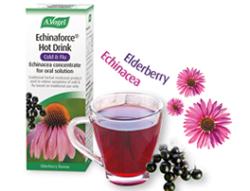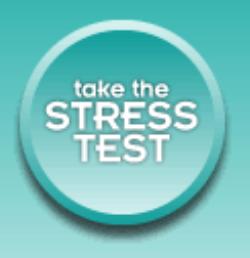- 01292 260 334
- My Account
- £0
Free shipping on all UK deliveries over £25 & under 2Kg
Recent Articles
- Do you really need to take a supplement if you eat well..?
- Back the gym - may be its time to take some MSM
- Can magnesium help migraine?
- Are you getting your daily D?
- Vitamin D deficiency increases risk of adverse effects of COVID infection
- Recovery from COVID - it's a bit of a lottery!
- There is more to vitamin C than you think
- Keeping one step ahead when the stress is rising
- Guarding against and battling the neurodegenerative nature of Alzheimer’s Disease
- How to boost Energy Naturally
Poor sleep? Check out our suggestions...
15/01/2015
Sleep – Why we need it?
The above question would seem obvious. But, it is quite surprising that the purpose and mechanisms behind sleep have puzzled researchers for years. The fact is the reason why we need sleep is unclear. We know that failure of a good night’s sleep can result in irritability, lack of concentration and clumsiness and after all depriving someone of their sleep is a form of torture. But, the reality is that there are no clear reasons for these effects. There are a few theories which attempt to explain the function of sleep, but they too have their critics.
A concept known as the Adaptive Theory is one of the earliest theories which suggests that sleep is a protective function against predators. By keeping quiet and still at night when the animals are vulnerable to attack gives an advantage over animals that would be active at night-time. However, critics argue that it is better to stay conscious and be ready for an attack in a wakeful state in order to survive. Energy Conservation Theory is Another popular theory suggesting that sleep is necessary to conserve energy especially when food is not plentiful. Sleep will reduce the need for energy for at least part of the day. However, this theory too has its critics. Research has shown that while body temperature and calorie demand is decreased by sleep in comparison to wakefulness, it is only by 5-10%.
The Restorative Theory suggests that sleep allows the body to repair and revitalise any ‘damage’ done during the active part of the day. Animal studies have shown that when deprived of sleep the animal loses immune function and will die. While the body’s function such as tissue repair, protein synthesis and growth hormone releases occur during sleep other brain and cognitive function are also restored. Adenosine is a by-product of brain cell activity and is thought to lead to our perception of being tired. A build-up of adenosine may lead to our motivation to have a sleep so the body can clear adenosine from the system allowing us to feel alert when we wake-up. Brain Plasticity Theory is one of the more recent theories and is based on research which finds that sleep is connected to changes in the structure and organization of the brain. This is known as brain plasticity. Sleep is crucial to brain development in infants and young children but there appears to be links in adults too which can be shown in experiments which investigate the effect that sleep and sleep deprivation has on the ability to learn and perform a variety of tasks. In addition, there are suggestions that the quantity and quality of sleep has a profound impact on learning and memory. A sleep-deprived person will be unable to fully focus attention or be able to consolidate or learn new memories which therefore affects learning. Sleep Types In general, sleep can be divided into two main categories: the deep sleep state known as rapid eye movement sleep (REM sleep) and the stages of lighter sleep known as non-REM sleep. During a typical night, a good sleeper will cycle between REM and non-REM sleep 4-5 times interspersed by occasional mini-wakes lasting 1-2 minutes every couple of hours. The loss of the ability to migrate into REM sleep or return to sleep after a mini-wake typically characterizes the condition known as non-restorative sleep disorder. Stress and anxiety is a very common factor that underlies this pattern of disturbed sleep and one that is known to have a severe impact on night-time cortisol levels. Cortisol is a key sleep regulating hormone. In health, cortisol levels normally decline at bedtime. This helps to facilitate a calmer brain and nervous system and encourages the sleep process. When stressed or anxious, cortisol is released in higher amounts and this level will not drop at bedtime. As a result, sleep will become deregulated and we may lie awake is a state of hyper-vigilance. If on-going, many people will turn to sedatives in order to force a state of drugged sleep which is not really the answer.
Natural Sleep Aids Phosphatidylserine (PS) is a natural agent that may offer a sleep solution. When scientists were investigating the effects of PS on the stress response they noted something quite amazing. They asked healthy volunteers to use an exercise bike in order to simulate a stressor and indeed their stress hormones, including cortisol, shot up. However, when they gave the same volunteers PS before the same cycling task there was a significant drop in the level of cortisol. They concluded that PS influences the complicated chemical cascade that results in raised cortisol levels. PS soon became popular with those suffering from stress-related sleep disturbance with some very positive outcomes.
Japanese research into the connection between L-Theanine and Alpha Brain Waves found that not only did L-Theanine have calming effects they were not associated with any drowsiness or impairment in the clarity of thought. Much research has been conducted on L-theanine since this initial work on the positive influence this natural amino acid has on stress, anxiety and on disturbed sleep. Research has shown that L-Theanine helps to protect nerve cells within the brain and is linked to increased alpha wave production. Our brains generate four main wave patterns, each associated with certain mental states. Delta waves tend to be dominant during deep sleep with theta waves being the main level of brain activity during the phases of light sleep. When we are awake and excited our brains typically generate lots of beta waves but what we really want, especially in cases of stress and anxiety are alpha waves. These brain wave patterns occur in states of being awake but relaxed. This may sound a rather conflicting state of being, but you can be awake and have a good feeling of overall well-being; thanks to alpha waves. Further studies have shown that using L-Theanine (Elthea-100) can ease states of stress and anxiety by encouraging a moremrealxed and positive mood through the generation of alpha wave dominance. Another key effect of taking Elthea is an increased production of another brain derived amino acid GABA and another brain chemical dopamine which resulted in an overall improvement in emotional well-being and better sleep.
Dormeasan is another natural sleep aid that has stood the test of time. It’s available in the form of a liquid herbal tincture made from two key herbal extracts; valerian and hops. The best time to take Dormeasan is around half an hour before bedtime, normally using 30 drops in a small amount (an egg cup size is best) of water. Like all natural remedies, Dormeasan may take a couple of nights use to take effect but if you do not notice much improvement in your sleep pattern after 4 weeks or so it’s best to have a chat with your doctor.
Tweet

Maria Webb
Psychology, Stress & Health
Archive
Don't let colds and flu stop you this winter!
15/01/2015
When your body is burning up, you’re aching all over, and you just can’t seem to shift those sniffles, a little something to soothe and comfort you goes a long way.
Whether it’s a warm cordial, a hot toddy or a ‘secret’ family recipe we all at some point, invariably turn to a hot drink for some extra warmth and comfort to relieve those annoying cold and flu symptoms.
For those keen to stay away from over the counter medicinal drinks containing paracetamol and which are often unpleasant to taste, our NEW Echinaforce® Hot Drink for cold & flu provides the ideal alternative.
Combining our ever popular fresh Echinacea root and herb extracts with Black Elderberry (Sambucus nigra), this tasty and comforting drink is packed with antioxidants to help relieve many of the symptoms of the common cold and flu.

Tweet

A helpful suggestion from our friends at A Vogel
Take the Stress-Test... its FREE!
15/01/2015
We all need some stress in life in order to thrive; life would be so dull without a few challenges. Ongoing, continual stress however, can result in ill-health.
Snap Shot Stress Analyser
Do you know your number?
Take a couple of minutes to complete our Snap Shot Stress Analyser. Simply use your mouse cursor to slide the marker along the line or if you are using a tablet touch the line at the appropriate position to indicate how much you agree or disagree with the question about how you are feeling at this moment in time.
When you have completed all 10 questions click on the submit button to reveal your score. The closer to 100 you score, the more stressed you appear to be today. By clicking on the Advise Me button you will receive a free personalised email report and some general stress management advice tailored to your score.
You can repeat this test as many times as you like or share it with your friends and family.
Go - now take the Stress Test - click on the big Red Button!
Tweet

Spice up your life to cool down inflammation
06/01/2015
There has been quite a lot of press interest in the adverse effects of certain anti-inflammatory drugs and their potential to trigger a host of unwanted side effects including heart attacks. It’s no secret that most anti-inflammatory medications can play havoc with your stomach and gut but the news that taking these drugs could cause heart complications was quite a shock to those who have come to rely on these drugs to get them through the day. Interestingly, research over the years into the spice turmeric has revealed some encouraging results when used to treat pain and inflammation. Turmeric is composed of a complex mixture of organic compounds the principle one being curcumin. Although easily confused with the spice cumin, curcumin is completely unrelated and a unique compound to the spice turmeric. It belongs to a group of compounds called curcuminoids that are responsible for the typical yellow colour of turmeric. Anyone who has seen natural turumic root in the supermarket may notice a similarity to another culinary spice, ginger root. However, this is no coincidence because turmeric and ginger both belong to the same botanical family; Zingiberaceae. Both of these spices accumulate pharmacologically important compounds within the root tissue. In the case of turmeric the compounds are known as curcuminoids where as in ginger the compounds are called gingerols. The key fact that interests us is the ability of these compound to effectively reduce inflammation and pain while sparing other tissues the hazardous side effects commonly associated with anti-inflammatory medications. This may sound a bit to good to be true but to understand how turmeric, or more specifically the curcumoid known as curcumin, achieves this we will have to discuss the inflammatory process and a bit of biochemistry!
Inflammation – the basics.
When ever we injure ourselves the body has to mend the damage. To do this, chemicals need to be released that enhance blood supply, neutralise any invading bad bacteria and stimulate the local immune reaction. Over this early (acute) phase inflammation is accompanied by pain, swelling and some heat. In the majority of cases this process is self-limiting and once the injury has been mended all the levels settle to normal along with all the related symptoms. However, this is not always the case especially if there is an ongoing irritant present such as arthritis, joint damage or autoimmune disease. In these cases the inflammation becomes chronic and the sufferer experiences daily pain and disability. Anti-inflammatory drugs can offer great relief but often at a price and their safe long term use has become questionable.
Inflammation – the chemistry
The cascade of events that eventually causes inflammation kicks off within cell membranes. A specific fatty acid, known as arachidonic acid (AA), is released from it’s bound state within the cell membrane by an enzyme (phospholipase-A2). Two key players in the inflammation story, COX and LOX, then act upon the now freed AA. The COX enzyme comes in two forms, COX1 and COX 2. When AA interacts with COX1 it produces a mixture of compounds (prostaglandins; PG’s) that protect the stomach and maintain the ability of the blood to clot. When AA interacts with COX2 in produces PG’s that signal pain and enhance inflammation. The LOX enzyme converts AA into another powerful group of inflammatory compounds known as leukortrines. Drugs that block the COX and LOX enzymes are known as anti-inflammatory drugs for this reason; they block the inflammatory cascade. However, by blocking the COX1 enzyme these drugs also block the stomach and gut protective PG’s and cause thinning and blood vessel leaks as they also block the PG’s that maintain blood clotting. As a result, specific drugs were developed that selectively block the COX2 enzyme but leave the COX1 alone. In theory, this sounded great but in reality the drugs did leave the COX1 enzyme alone in the majority of tissues except the COX1 found within the cells that line the blood vessels. These cells are called endothelial cells and the COX1 enzyme within these cells produces a special compound known as prostacyclin, which in turn maintains the smooth flowing of the blood within the blood vessels. By blocking the action of endothelial COX1 and the production of prostacyclin blood becomes stickier and prone to clotting, which explained the increased heart attack risk associated with drugs that have COX2 inhibitor action.
Inflammation – the natural answer
Research into the anti-inflammatory actions of curcumin has revealed that curcumin is a safe and effective inhibitor of COX2 and of the LOX enzyme that is responsible for the generation of the powerful inflammatory actions of leukortrines. What’s more, curcumin has also been shown to block the initial release of AA from the cell membrane. By doing this curcumin may have an effective preventative action as well as a powerful anti-inflammatory effect when used on a regular basis. To date, there have been no indication or suggestion that curcumin inhibits the endothelial COX1.
One factor that goes against curcumin is it’s poor absorption from the digestive tract. To get around this problem manufacturers have produced a highly bio-available extract; Theracurmin. This innovative ingredient uses a microscopic particle (100 times smaller than regular curcumin powder) size to enhance the curcumin absorption from the gut. Studies using Theracurmin have shown that the microscopic curcumin particles are absorbed up to and reach concentrations 300 times higher than regular powders.
How to take curcumin supplements
Theracurmin is simple and easy to use; take 1-2 capsules daily around a meal time. Because of the lack of available information, those who are pregnant or breast feeding or taking warfarin should only use curcumin based products after taking medical advise.
Tweet

Marcus Webb
Diet, Nutrition & Health
- visa
- visa verified
- american express
- mastercard secure
- mastercard
- maestro
- delta
- sagepay